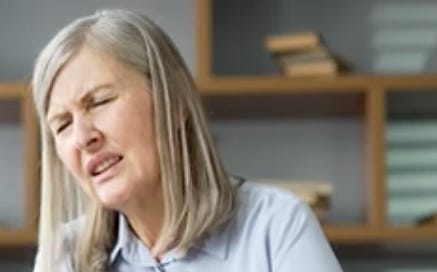Today’s Topic Highlights:
Muscle cramp alleviation and prevention are not only learnable skills, but ones that every older adult should have in their self-care arsenal.
The gastrocnemius, soleus and plantar muscles (calves and feet) are the most susceptible to cramps in people 60 years and older. 80% of muscle cramps experienced in this age group occur in the calves.
Muscle cramps can be triggered by several different causes. These include dehydration, long periods of sitting, soft tissue adhesions, electrolyte imbalance, certain diseases, and medications.
Soft tissue adhesions are concentrated areas of bunched up connective tissue which can form as a result of prolonged sitting, poor movement mechanics, traumatic injury, surgery, or strenuous exercise.
When in doubt, perform both foot massage and calf stretching as outlined in the article for complete cramp alleviation.
Muscle cramps are a pain to deal with - literally. They consume our attention the moment they appear and seem to come at the most inconvenient times (which is basically anytime, since cramps are always a nuisance). You do not have to needlessly suffer them though. Muscle cramp alleviation and prevention are not only learnable skills, but ones that every older adult should have in their self-care arsenal.
For the sake of clarity, understand that there are several terms related to “muscle cramps”. Terms like charley horse, muscle spasm, and nocturnal leg cramp (NLC) all refer to the same phenomenon of involuntary, and sometimes painful, uncontrolled muscle contractions. Cramps of all kinds can occur any time of the day or night. This article will focus specifically on dealing with nighttime calf and foot cramps.
Here are some interesting statistics about foot and calf cramps in adults over 60 years of age:
The gastrocnemius, soleus and plantar muscles (calves and feet) are the most susceptible to cramps.
80% of muscle cramps occur in the calves. 1
Nocturnal leg cramps (NLCs) affect approximately 37% of the population. 2
Muscle cramping frequency tends to increase as the years pass.
Muscle cramps can be triggered by several different causes. These include dehydration, long periods of sitting, soft tissue adhesions, electrolyte imbalance, certain diseases, and medications. If you are on prescribed medications, it is important to be aware of which ones can potentially induce muscle cramps. Medications that are known to produce cramps include drugs to treat the following conditions: hypertension, heart disease, high cholesterol, Parkinson’s, and Alzheimer’s.3
Dehydration for any reason predisposes both the young and old alike to muscle cramping. Dehydration occurs when you use or lose more fluid than you take in, and your body doesn't have enough water and other fluids to carry out its normal functions. If you don't replace those lost fluids, you will become dehydrated. Cramping is often a result of simply not drinking enough water, particularly during warm weather months.
Soft tissue adhesions, AKA “knots”, trigger muscle cramps just as commonly as dehydration. Soft tissue adhesions are concentrated areas of bunched up connective tissue which can form as a result of prolonged sitting, poor movement mechanics, traumatic injury, surgery, or strenuous exercise. Failure to stretch the calf and foot musculature on a regular basis increases the susceptibility to developing adhesions in the calves and plantar fascia.




